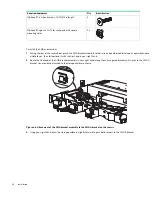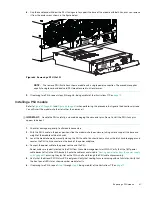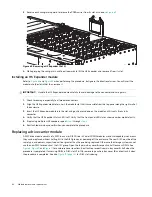
72
Troubleshooting and problem solving
5
Troubleshooting and problem solving
These procedures are intended to be used only during initial configuration, for the purpose of verifying that hardware
setup is successful. They are not intended to be used as troubleshooting procedures for configured systems using
production data and I/O.
NOTE:
For further troubleshooting help–after setup and when data is present–see
https://seagate.com/support-home
.
Overview
The enclosure system includes a Storage Enclosure Processor (SEP) and associated monitoring and control logic to
enable it to diagnose problems with the enclosure’s power, cooling, and drive systems. Management interfaces allow for
provisioning, monitoring, and managing the storage system.
IMPORTANT:
See
“Fault isolation methodology” (page 75)
when conducting system diagnostics.
Initial start-up problems
Faulty power cords
Check that you have correctly cabled the system. Contact your supplier for replacements if:
•
Power cables are missing or damaged.
•
Plugs are incorrect.
•
Power cables are too short.
Computer does not recognize the enclosure system
1.
Verify that the interface cables from the enclosure to the host computer are fitted correctly.
2.
Verify that the LEDs on all installed drive carrier modules do not show fault status.
3.
Verify that the drive carrier modules have been correctly installed.
4.
Check any visible SAS indicators (HBA, JBOD/EBOD, and RBOD if applicable).
5.
Check HBA BIOS for SAS target visibility.
6.
Verify that the operating system driver has been installed correctly.
NOTE:
If the enclosure fails initialization, see
“If the enclosure does not initialize” (page 76)
LEDs
LED colors are used consistently throughout the enclosure and its components for indicating status:
•
Green: good or positive indication
•
Blinking green/amber: non-critical condition
•
Amber: critical fault
•
Blue: identification
















































